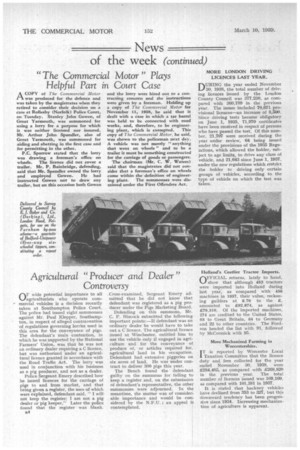"The Commercial Helpful Part in Motor" Plays Court Case A COPY
Page 38

If you've noticed an error in this article please click here to report it so we can fix it.
of The Commercial Motor was produced for the defence and was taken by the magistrates when they retired to consider their decision on a case at Rollesby (Norfolk) Police Court, on Tuesday. Stanley John Gowen, of Great Yarmouth, was summoned for using a lorry for a purpose for which it was neither licensed nor insured. Mr. Arthur John Spandler, also of Great Yarmouth, was summoned for aiding and abetting in the first case and for permitting in the other.
P.C. Sparrow stated that the lorry was drawing a foreman's office on wheels. The licence did not cover a trailer. Mr. P. Bainbridge, defending, said that Mr. Spandler owned the lorry and employed Gowen. He had instructed Gowen not to draw any trailer, but on this occasion both Gowen
and the lorry were hired out to a contracting concern and the instructions were given by a foreman. Holding up a copy of The Commercial Motor for November 11, 1938, he said that it dealt with a case in which a tar barrel was held to be connected with road works, and, therefore, to be engineering plant, which is exempted. This copy of The Commercial Motor, he said, was shown to the policeman next day. A vehicle was not merely "anything that went on wheels" and to be a trailer it must be something constructed for the carriage of goods or passengers.
The chairman (Mr. C. W. Waters) said that the magistrates did not consider that a foreman's office on wheels came within the definition of engineering plant. The summonses were dismissed under the First Offenders Act.




























































































